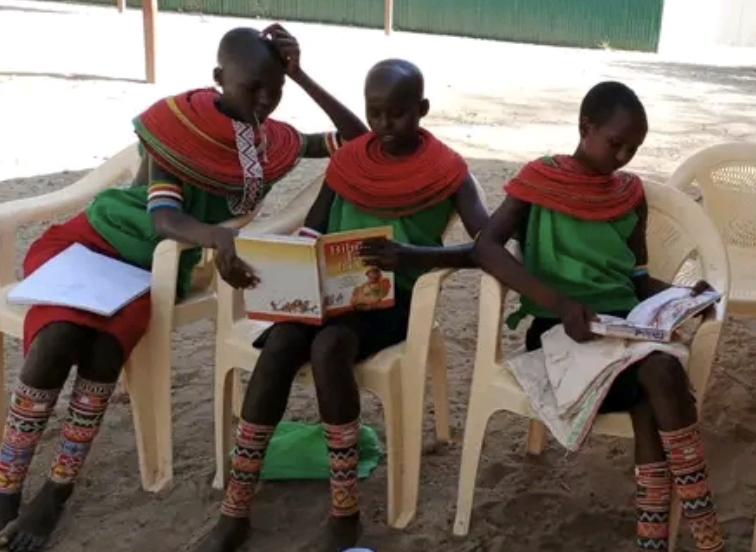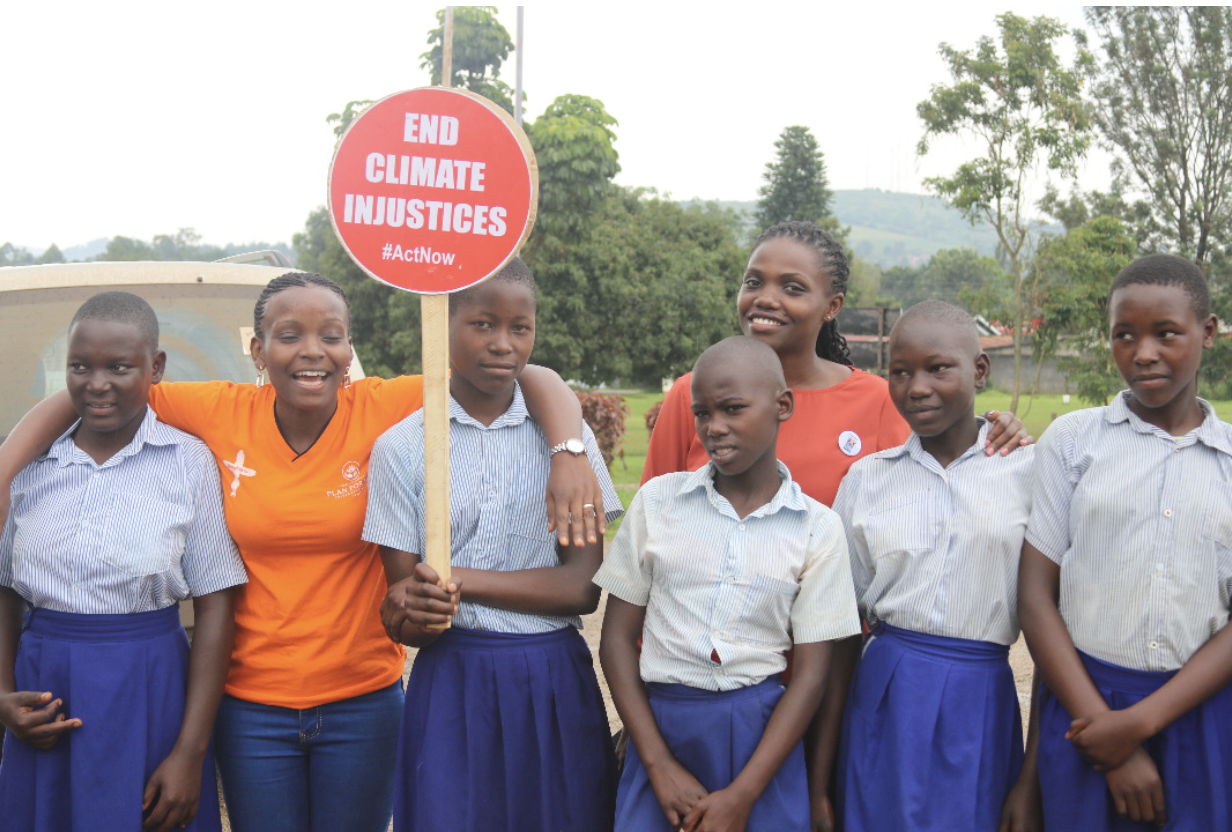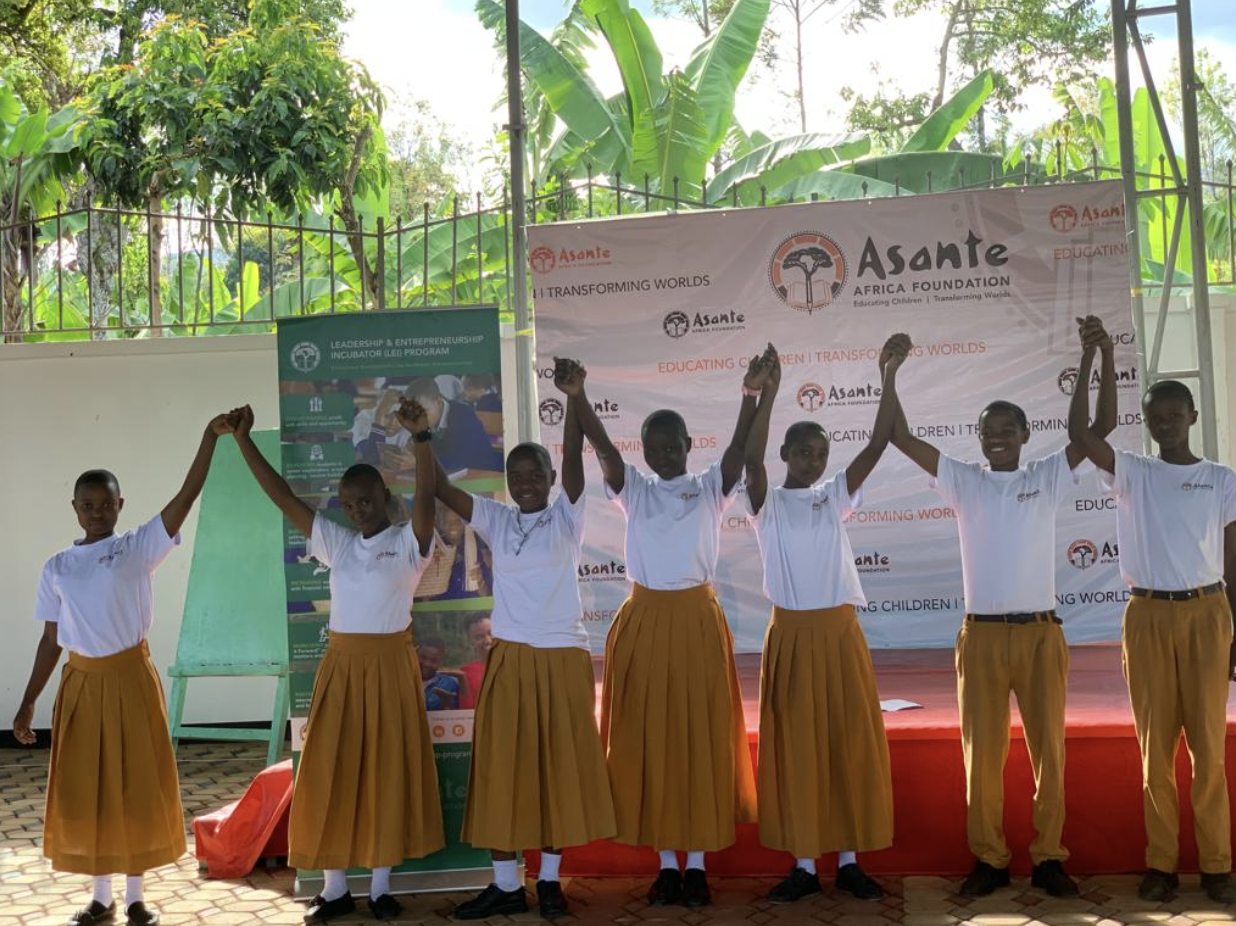Why Girls Education is Key to Tackling Global Warming
 For hundreds of thousands of years prior to the Industrial Revolution the concentration of atmospheric carbon dioxide (C02), a persistent greenhouse gas, was relatively stable, wavering over long time periods (fifty thousand years) between 180 and 280 parts per million (ppm). With the Industrial Revolution, ppm increased gradually until about 1850, when the ppm concentration began a steadier climb.
For hundreds of thousands of years prior to the Industrial Revolution the concentration of atmospheric carbon dioxide (C02), a persistent greenhouse gas, was relatively stable, wavering over long time periods (fifty thousand years) between 180 and 280 parts per million (ppm). With the Industrial Revolution, ppm increased gradually until about 1850, when the ppm concentration began a steadier climb.
In 1958, the National Oceanographic and Atmospheric Agency’s (NOAA) Mauna Loa Observatory in Hawaii measured atmospheric CO2 at approximately 320 ppm; January 2023 Mauna Loa reported CO2 at 420 ppm. The 100 ppm increase that historically would have taken fifty thousand years to transpire took little more than fifty.
So what?
Rapid as that increase was, the difference of a hundred or a hundred and fifty parts per million doesn’t sound like much. Very much not like much. Expressed as a percentage, 420 ppm looks like this: 0.00042.
Yet, according to NOAA, “The atmospheric burden of CO2 is now comparable to where it was during the Pliocene Climatic Optimum, between 4.1 and 4.5 million years ago, when CO2 was close to, or above 400 ppm. During that time, sea level was about 78 feet higher than today, the average temperature was 7 degrees Fahrenheit higher than in pre-industrial times…”
Clearly, temperatures and sea levels today are nowhere near what they were four-plus million years ago. But today it’s also clear that even a tiny uptick of CO2 ppm has had, and will continue to have, the capacity to upend long-term climates around the world as well as the short-term weather within them, including extreme weather events.
This too is clear: If we want to keep the world from totally spinning away from climate norms hundreds of thousands of years in the making we’ve got to get the ppm under control. Bar new ones from going up; coax the troublemakers into coming down.
But how?
Around 2014, economist and environmentalist Paul Hawken pitched that question to the four corners of the planet. He sent out a worldwide call for proposals that would tackle ppm, up and down. Each of the proposals was ranked according to a balance of its potential to impact the atmosphere and its ability to be quickly and broadly implemented. The top 100 proposals were then published in 2017 in Drawdown: The Most Comprehensive Plan Ever Proposed To Reverse Global Warming, a New York Times bestseller.
As you might expect, many of the select hundred are high-tech, often advancing on a grand scale strategies and innovations already modestly in play: wind turbines, solar panels, geothermal energy, as well as ultra-efficient buildings and modes of transportation.
Yet, many highly effective and impactful proposals are very low-tech, also advancing on a grand scale strategies and innovations already modestly in play: wasting less food; moving toward a plant-based diet; restoring farmland.
“Girls’ education, it turns out, has a dramatic bearing on global warming,” the chapter on the #6 most effective solution, Educating Girls, begins:
 Women with more years of education have fewer, healthier children and actively manage their reproductive health… [According to a study published in Science] If all nations achieved 100 percent enrollment of girls in primary and secondary school, by 2050 there would be 843 million fewer people worldwide than if current enrollment rates sustain. According to the Brookings Institution, “The difference between a woman with no years of schooling and with 12 years of schooling is almost four to five children per woman. And it is precisely in those areas of the world where girls are having the hardest time getting educated that population growth is the fastest.”
Women with more years of education have fewer, healthier children and actively manage their reproductive health… [According to a study published in Science] If all nations achieved 100 percent enrollment of girls in primary and secondary school, by 2050 there would be 843 million fewer people worldwide than if current enrollment rates sustain. According to the Brookings Institution, “The difference between a woman with no years of schooling and with 12 years of schooling is almost four to five children per woman. And it is precisely in those areas of the world where girls are having the hardest time getting educated that population growth is the fastest.”
Today, 130 million girls are denied the right to attend school. The situation is most dire in secondary classrooms…In sub-Saharan Africa, fewer than one in three girls attends secondary school, and while 75 percent of all girls start school, just 8 percent finish their secondary education.
So, educated women have smaller, healthier families; conceivably, smaller families consume fewer resources than larger families; therefore, at least in theory, smaller families produce fewer greenhouse ppm than larger families.


It’s true that the carbon footprints of people from developing countries are tiny compared with people in industrialized societies. But managing families, rather than being managed by them, has to be considered a positive in its own right. Managing her family gives a girl not only some power over the number of children she brings into the world, but also power over the woman she ultimately becomes in the world. That managing families by way of educating girls2women has the potential to limit the impacts of climate change, however many ppms fewer than what might otherwise have been, is a double positive.
In its position paper, “Addressing the climate, environment, and biodiversity crises in and through girls’ education,” the British Foreign, Commonwealth, and Development Office addresses educating girls as a climate concern, and climate as a concern for educating girls. Citing some of the same advantages noted in Drawdown, the position paper also cautions that girls in areas most susceptible to climate disruption, especially from drought or flooding, may find their schooling disrupted, for long periods, perhaps indefinitely: Floods can wash away access to schools or wash away the schools themselves; drought can force girls who might otherwise attend school to miss school regularly in order to secure water for their families. However, the paper also claims that educating girls will make them (and by extension, those they care for) more resilient to climate hardships, and more creative problem-solvers.
A donation to Asante Africa is like making two donations, two sides of the same coin: one to our decades-long goal of educating girls and empowering women in East Africa; the other to reducing for decades to come the number of ppms unsettling the planet. Flip the coin: whether it’s to empower women, to tamp down ppms, or both, whatever your reason, please coin up. Please support Asante Africa.
(If you would like to see the other Drawdown proposals, visit www.drawdown.org) – (If you would like to read the British position paper, visit Addressing The Climate)
WRITTEN BY: Jerry Blitefield
